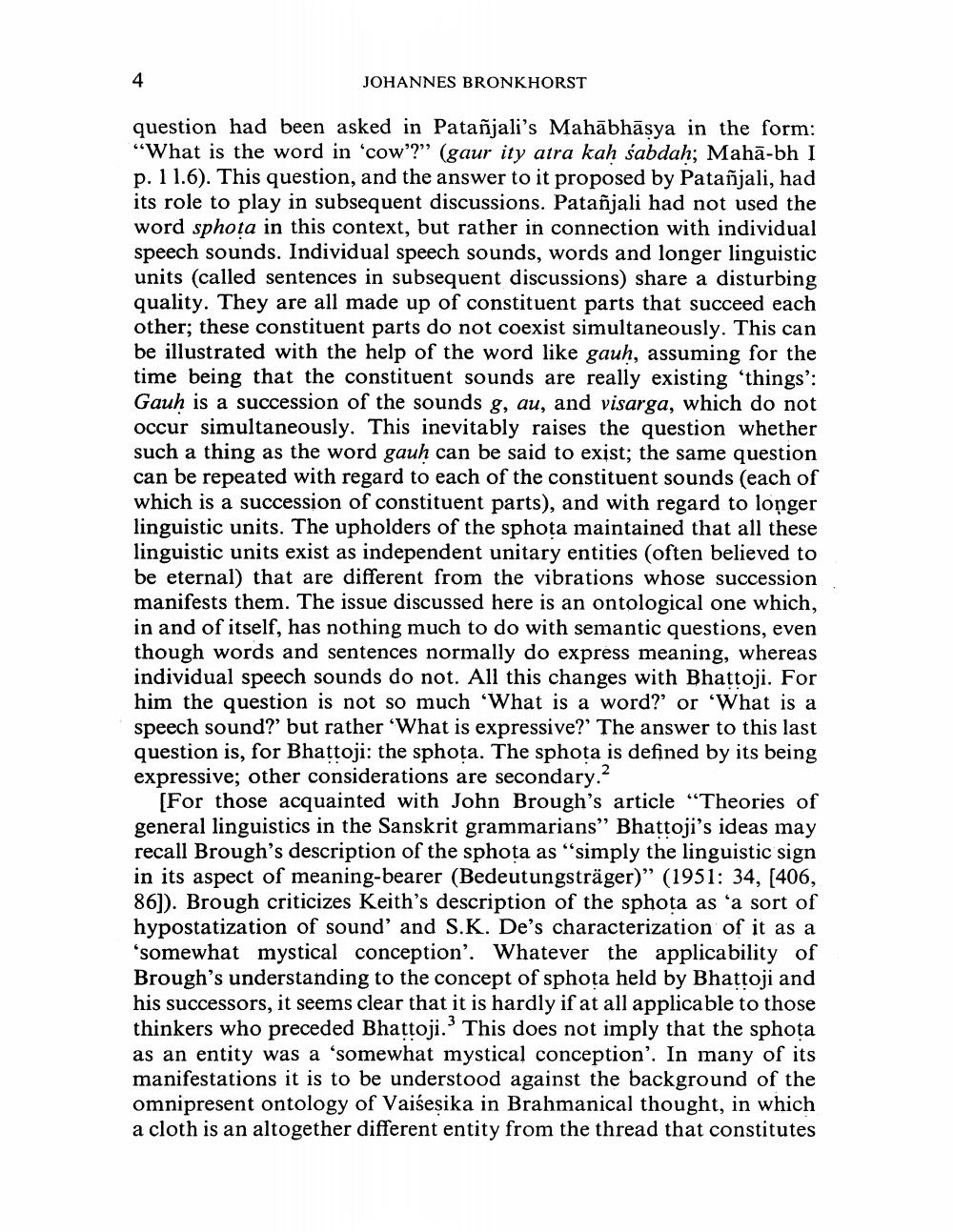Book Title: Bhattoji Diksita On Sphota Author(s): Johannes Bronkhorst Publisher: Johannes Bronkhorst View full book textPage 2
________________ JOHANNES BRONKHORST question had been asked in Patañjali's Mahābhāsya in the form: “What is the word in 'cow'?” (gaur ity atra kah sabdah; Mahā-bh I p. 1 1.6). This question, and the answer to it proposed by Patañjali, had its role to play in subsequent discussions. Patañjali had not used the word sphota in this context, but rather in connection with individual speech sounds. Individual speech sounds, words and longer linguistic units (called sentences in subsequent discussions) share a disturbing quality. They are all made up of constituent parts that succeed each other; these constituent parts do not coexist simultaneously. This can be illustrated with the help of the word like gauh, assuming for the time being that the constituent sounds are really existing 'things': Gauh is a succession of the sounds g, au, and visarga, which do not occur simultaneously. This inevitably raises the question whether such a thing as the word gauh can be said to exist; the same question can be repeated with regard to each of the constituent sounds (each of which is a succession of constituent parts), and with regard to longer linguistic units. The upholders of the sphota maintained that all these linguistic units exist as independent unitary entities (often believed to be eternal) that are different from the vibrations whose succession manifests them. The issue discussed here is an ontological one which, in and of itself, has nothing much to do with semantic questions, even though words and sentences normally do express meaning, whereas individual speech sounds do not. All this changes with Bhattoji. For him the question is not so much 'What is a word?' or 'What is a speech sound?' but rather 'What is expressive?' The answer to this last question is, for Bhattoji: the sphota. The sphota is defined by its being expressive; other considerations are secondary. (For those acquainted with John Brough's article “Theories of general linguistics in the Sanskrit grammarians" Bhattoji's ideas may recall Brough's description of the sphota as "simply the linguistic sign in its aspect of meaning-bearer (Bedeutungsträger)" (1951: 34, (406, 86]). Brough criticizes Keith's description of the sphota as 'a sort of hypostatization of sound' and S.K. De's characterization of it as a 'somewhat mystical conception'. Whatever the applicability of Brough's understanding to the concept of sphota held by Bhattoji and his successors, it seems clear that it is hardly if at all applicable to those thinkers who preceded Bhattoji." This does not imply that the sphota as an entity was a 'somewhat mystical conception'. In many of its manifestations it is to be understood against the background of the omnipresent ontology of Vaisesika in Brahmanical thought, in which a cloth is an altogether different entity from the thread that constitutesPage Navigation
1 2 3 4 5 6 7 8 9 10 11 12 13 14 15 16 17 18 19 20 21 22 ... 39
